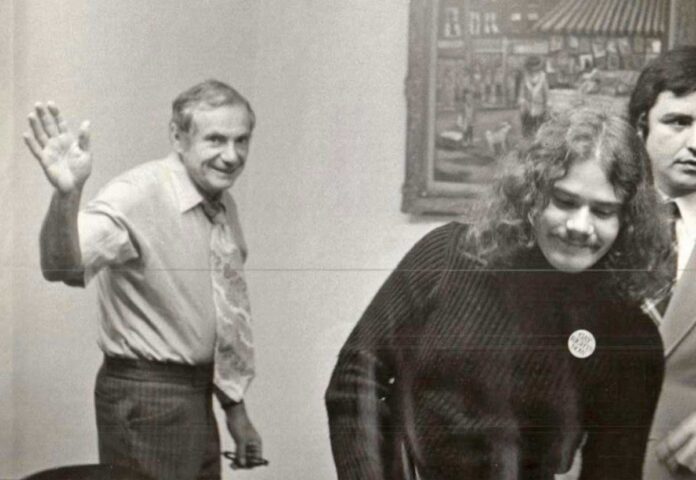The Human Rights Campaign’s “Municipal Equality Index” is considered the gold standard in measuring how over 500 city governments provide services and welcome their LGBT citizens. One of the simplest questions for a city to gain points is, to me, one of the most important in the whole index: Does your city have an LGBTQ+ liaison or commission?
As the reports states: “an LGBTQ+ liaison to the Mayor or City Manager’s office… is responsible for looking at city policies and services through an LGBTQ+ lens and speaking up when a policy or service might exclude LGBTQ+ people. This position is also known to be a friendly ear to constituents who want to bring LGBTQ+-related issues to the city government but are fearful they might be dismissed or misunderstood.”
While the HRC survey is celebrating its 10th year, I’m lucky to have been at the birth of the vision that created that question about LGBT liaisons. It was in 1975, the first time that any elected official in the country was asked to create such a concept. I asked Governor Milton Shapp to create an LGBT commission to look into the issues faced by LGBT citizens in Pennsylvania. And I asked that the commission should have liaisons to each department of the state government.
What’s more amazing is that Governor Shapp actually did it.
The Commission for Sexual Minorities was born, and at the table were representatives from each state department working side by side with people from the LGBT community. The commission worked on ground breaking issues for its time. Many of those issues — that now make up a majority of the questions on the HRC survey — were dealt with on a governmental level for the first time.
As reported in HRC’s report, 99% of the municipalities with a 100% MEI rating have an LGBTQ+ liaison to the city executive. Those liaisons and commissions create change, and all of them stand on the shoulders of what was done way back in 1975.
As our history is becoming more important and — in some unfortunate ways — revised, it’s important to know our roots and the difficulties that were encountered to make change possible. The governor and those of us working with him for these changes in 1975 were criticized by the media statewide. We received threats. One of the threats I received from the KKK is now part of the LGBT collection at the Smithsonian in Washington. Legislators attempted to block the governor; newspapers ran editorials demanding that he disband the commission. We were asked (commanded) to appear in front of numerous legislative committees. But some of it was outrageously humorous. Colonel Barger, of the State Police, actually barged into Gov. Shapp’s office and told him he would not obey his order and have homosexuals in the state police. A couple hours later I got a call from Lt. Gov. Ernie Kline asking me to be at the office of the police barracks the next morning to sign up to become a state trooper.
When I arrived I noted that the Governor’s office had informed the media of what I was about to do. It was a circus, this gay man with long hair, think hippy style, dressed in jeans wearing sunglasses and a beat up brown jacket (which I still have) entering to sign up to be a police officer. After filling out the paperwork I went outside to meet a barrage of cameras and microphones being shoved in my face. At first I took it for laughs. Question number one was, “Mark you’re a homosexual.”
After that became clear, the reporter clarified the question: “Why would you want to be a state trooper?” I went for the obvious laugh and said “I like men in uniform.” Then I added the also obvious point: “any citizen who can do the job should have the same right to be a state trooper or any other job in the state.”
My vision was that creating commissions and liaisons created not only reach for the LGBT community but also a chance to be visible. To me visibility brings equality. Cheers to HRC on their appreciation of how liaisons and commissions can create change in a city and empower our community.
One final point. During that time in 1975, it became clear to me that other states should do the same. So I wrote to all 50 state governors, asking them to create LGBT commissions in their state. Around 20 governors responded, and those replies were then sent to the various LGBT organizations in those states, starting the process for those communities. The visibility which began in Harrisburg grew from there.
Many of those states and cities began to create both commissions and liaisons which became the entrance point for many in our community to become appointed and elected officials, and that of course brought more visibility. Those individuals have and still are creating change, and they are all contributing to our equality. We owe a debt of gratitude to all of them.

